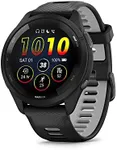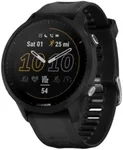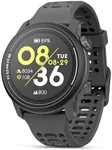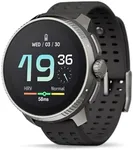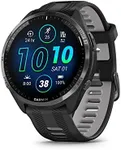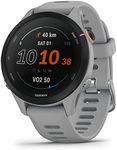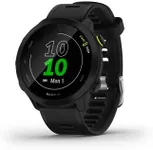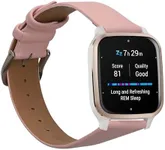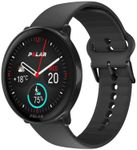Buying Guide for the Best Triathlon Training Watches
Choosing a triathlon training watch is all about finding a device that can keep up with your multi-sport lifestyle. These watches are designed to track your performance across swimming, cycling, and running, and often come with features that help you monitor your progress, set goals, and analyze your workouts. When picking the right watch, think about the sports you focus on most, the data you want to track, and how you plan to use the watch both during training and in everyday life. The right watch should feel comfortable, be easy to use, and provide the information you need to improve your performance.Multisport ModeMultisport mode allows you to switch between different sports (like swimming, cycling, and running) during a single workout or race without stopping your tracking. This is important for triathletes because it ensures all your data is recorded seamlessly, including transition times. Some watches offer quick and easy transitions, while others may require more manual input. If you regularly participate in triathlons or brick workouts, look for a watch with a dedicated multisport or triathlon mode that makes switching between activities effortless.
GPS AccuracyGPS accuracy determines how precisely the watch can track your location, distance, and speed during outdoor activities. This is crucial for measuring your performance in running and cycling. Some watches offer basic GPS, while others use multiple satellite systems for better accuracy, especially in challenging environments like forests or cities. If you train in varied locations or want highly reliable data, choose a watch known for strong GPS performance. For casual use, basic GPS may be sufficient, but for serious training, higher accuracy is beneficial.
Water Resistance and Swim TrackingWater resistance ensures your watch can handle swimming, whether in a pool or open water. Swim tracking features can include lap counting, stroke recognition, and distance measurement. Watches vary in their water resistance ratings, with some suitable only for pool swimming and others designed for open water. If swimming is a key part of your training, make sure the watch is rated for at least 5 ATM (50 meters) and offers the swim metrics you care about. For open water swimmers, GPS-enabled swim tracking is especially useful.
Battery LifeBattery life refers to how long the watch can operate before needing a recharge, especially when using GPS and other tracking features. This is important for long training sessions, races, or multi-day events. Some watches last only a few hours with GPS on, while others can go for a full day or more. If you do long-distance events or often forget to charge your devices, look for a watch with extended battery life in GPS mode. For shorter workouts, standard battery life may be enough.
Heart Rate MonitoringHeart rate monitoring tracks your pulse during workouts, helping you train at the right intensity and monitor your recovery. Watches may use optical sensors on the wrist or support chest strap connectivity for more accurate readings. If you want detailed heart rate data, especially during intense or varied activities, consider a watch that supports both wrist-based and external sensors. For general fitness tracking, wrist-based monitoring is usually sufficient.
Training and Recovery FeaturesTraining and recovery features include tools like workout suggestions, VO2 max estimation, recovery time guidance, and performance analytics. These help you understand your fitness level, avoid overtraining, and plan your workouts effectively. Some watches offer advanced metrics and coaching, while others stick to basic stats. If you like to analyze your performance and optimize your training, look for a watch with comprehensive training and recovery tools. If you prefer simplicity, basic tracking may be all you need.
Comfort and DurabilityComfort and durability refer to how the watch feels on your wrist and how well it stands up to regular use and tough conditions. Triathlon training can be demanding, so a lightweight, comfortable watch with a durable build is important. Some watches have interchangeable bands or rugged designs for extra protection. If you wear your watch all day or in harsh environments, prioritize comfort and durability. For occasional use, standard designs may suffice.
Connectivity and App SupportConnectivity and app support determine how easily your watch syncs with your phone or computer, and what kind of data analysis and sharing options you have. Features like Bluetooth, Wi-Fi, and compatibility with popular training apps can enhance your experience. If you like to review your workouts, share progress, or use third-party apps, choose a watch with strong connectivity and a user-friendly companion app. If you prefer to keep things simple, basic syncing may be enough.
